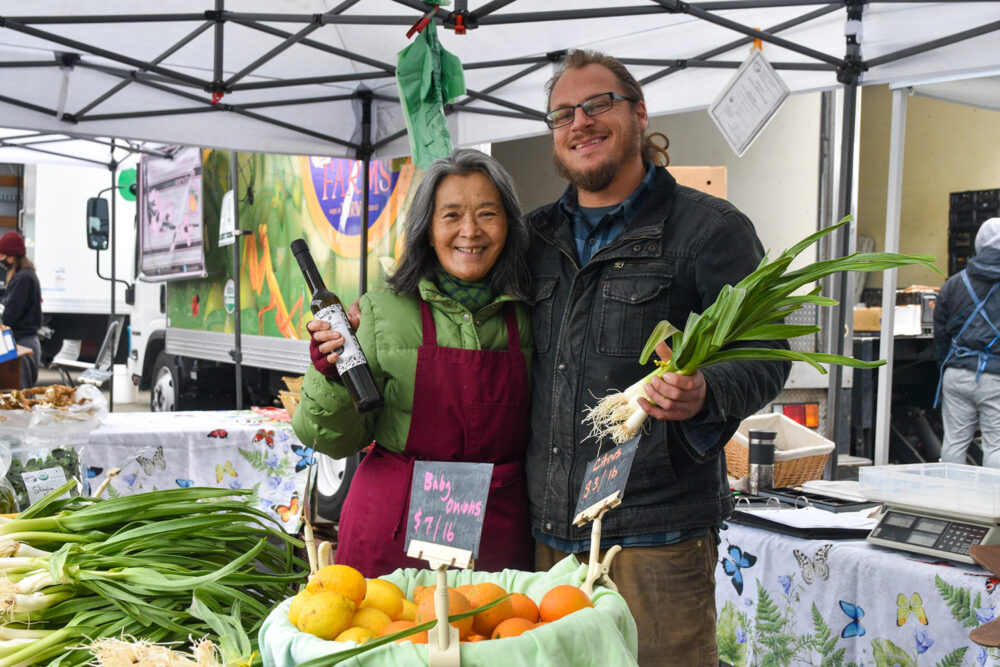Knoll Farms

People
Rick and Kristie Knoll, along with 10 employees
Farmland
10 acres in Brentwood, about 50 miles to San Francisco
About
Rick and Kristie were avid backyard gardeners in Santa Ana until 1979, when they purchased a weedy, 10-acre alfalfa field in Brentwood. Over time, their land evolved to become a productive agro-ecosystem that produces over 150 different products. The Knolls, known for their innovative practices, strive to continually increase the biodiversity and ecological stability of their farm. Their primary focus is “growing” more topsoil. They believe that if soil is well tended, it will provide healthy, nutritious food in perpetuity. Composting, cover cropping, low- and no-till, and crop rotation are just a few of the methods they employ to increase soil health. The Knolls describe their farm as “an organism unto itself, with its own rhythm and personality.”
Certification
Certified Organic. Knoll Farm became certified organic in 1984. They’ve always farmed using practices including organic, biodynamic and permaculture, among others. However, in 2002, Rick and Kristie dropped out of certification because they felt the term “organic” was being co-opted by industrial agriculture. They returned to organic certification in 2009.
